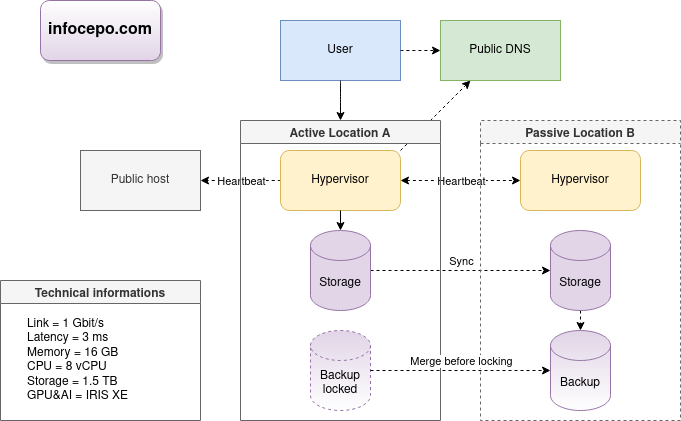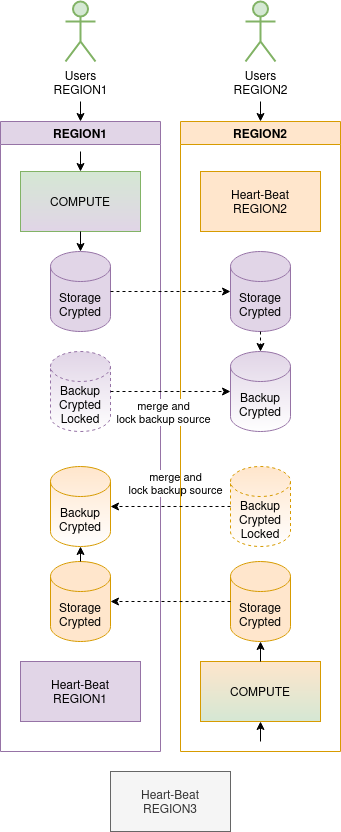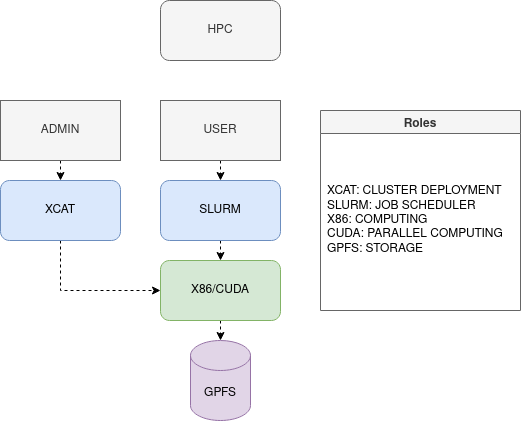Main Page: Difference between revisions
Jump to navigation
Jump to search
| Line 31: | Line 31: | ||
==== INTERESTING LLMs ==== | ==== INTERESTING LLMs ==== | ||
(18/07/2024) | (18/07/2024) | ||
{| class="wikitable" | {| class="wikitable" | ||
! Model | ! Model | ||
Revision as of 15:14, 18 July 2024
Discover cloud computing on infocepo.com:
- Master cloud infrastructure
- Explore AI
- Compare Kubernetes and AWS
- Advance your IT skills with hands-on labs and open-source software.
Start your journey to expertise.
AI Tools
- ChatGPT4 - public assistant with learning abilities.
- open-webui + GPU H100 + Ollama - private assistant and API.
- private summary
DEV
(22/03/2024)
- LLM Fine Tuning
- Models Trending
- Project Trending
- ChatBot Evaluate
- LLM Ranking
- Embeddings Ranking
- Image Evaluate
- Perplexity AI - R&D
- CogVLM - Private API for multimodal purposes. Usable with RAG.
- Vectors DB Ranking
- Chatchat - private assistant with RAG capabilities but Chinese language.
- NVIDIA H200 - KUBERNETES or HPC clusters for DATASCIENCE.
- NVIDIA 4080 - GPU card for private assistance.
INTERESTING LLMs
(18/07/2024)
| Model | Comment |
|---|---|
| RAG | (gemma2) |
| RAG-FR | (phi3-14b) |
| code | (gemma2-27b) |
| math | (gemma2-27b) |
| summary | (llama3) |
| qwen2 | fast |
| gemma2-27b | medium |
| qwen2-72b | best |
NEWS
(04/05/2024)
- Very good AI News
- LLM llama3-gradient 1M for long context available
- For the transcription real time with Diart it is possible to follow the interlocutors
- translation tools like Google translate are becoming popular
- LLM 10x accelerator and cheaper with GROQ
- Opensearch with LLM
- ACCEL : vision IA chip very efficient and powerful.
- IBM NorthPole : an IA chip very efficient and powerful.
TRAINING
CLOUD LAB

Presenting my LAB project.
CLOUD Audit
Created ServerDiff.sh for server audits. Enables configuration drift tracking and environment consistency checks.
CLOUD Migration Example
- 1.5d: Infrastructure audit of 82 services (ServerDiff.sh)
- 1.5d: Create cloud architecture diagram
- 1.5d: Compliance check of 2 clouds (6 hypervisors, 6TB memory)
- 1d: Cloud installations
- .5d: Stability check
| ACTION | RESULT | OK/KO |
| Activate maintenance for n/2-1 nodes or 1 node if 2 nodes. | All resources are started. | |
| Un-maintenance all nodes. Power off n/2-1 nodes or 1 node if 2 nodes, different from the previous test. | All resources are started. | |
| Power off simultaneous all nodes. Power on simultaneous all nodes. | All resources are started. |
- 1.5d: Cloud automation study
- 1.5d: Develop 6 templates (2 clouds, 2 OS, 8 environments, 2 versions)
- 1d: Create migration diagram
- 1.5d: Write 138 lines of migration code (MigrationApp.sh)
- 1.5d: Process stabilization
- 1.5d: Cloud vs old infrastructure benchmark
- .5d: Unavailability time calibration per migration unit
- 5min: Load 82 VMs (env, os, application_code, 2 IP)
Total = 15 man-days
WEB Enhancement
- Formalize infrastructure for flexibility and reduced complexity.
- Utilize customer-location tracking name server like GDNS.
- Use minimal instances with a network load balancer like LVS.
- Compare prices of dynamic computing services, beware of tech lock-in.
- Employ efficient frontend TLS decoder like HAPROXY.
- Opt for fast HTTP cache like VARNISH and Apache Traffic Server for large files.
- Use PROXY with TLS decoder like ENVOY for service compatibility.
- Consider serverless service for standard runtimes, mindful of potential incompatibilities.
- Employ load balancing or native services for dynamic computing power.
- Use open source STACKs where possible.
- Employ database caches like MEMCACHED.
- Use queues for long batch.
- Use buffers for stability of real streams.
- More information at CLOUD WIKIPEDIA and GITHUB.
CLOUD WIKIPEDIA
CLOUD vs HW
| Function | Kubernetes | OpenStack | AWS | Bare-metal | HPC | CRM | oVirt |
|---|---|---|---|---|---|---|---|
| Deployment Tools (Tools used for deployment) |
Helm, YAML, Operator, Ansible, Juju, ArgoCD | Ansible, Packer, Terraform, Juju | Ansible, Terraform, CloudFormation, Juju | Ansible, Shell Scripts | xCAT, Clush | Ansible, Shell Scripts | Ansible, Python, Shell Scripts |
| Bootstrap Method (Initial configuration and setup) |
API | API, PXE | API | PXE, IPMI | PXE, IPMI | PXE, IPMI | PXE, API |
| Router Control (Routing services) |
API (Kube-router) | API (Router/Subnet) | API (Route Table/Subnet) | Linux, OVS, External Hardware | xCAT, External Hardware | Linux, External Hardware | API |
| Firewall Control (Firewall rules and policies) |
Ingress, Egress, Istio, NetworkPolicy | API (Security Groups) | API (Security Group) | Linux Firewall | Linux Firewall | Linux Firewall | API |
| Network Virtualization (VLAN/VxLAN technologies) |
Multiple Options | VPC | VPC | OVS, Linux, External Hardware | xCAT, External Hardware | Linux, External Hardware | API |
| Name Server Control (DNS services) |
CoreDNS | DNS-Nameserver | Amazon Route 53 | GDNS | xCAT | Linux, External Hardware | API, External Hardware |
| Load Balancer (Load balancing options) |
Kube-proxy, LVS (IPVS) | LVS | Network Load Balancer | LVS | SLURM | Ldirectord | N/A |
| Storage Options (Available storage technologies) |
Multiple Options | Swift, Cinder, Nova | S3, EFS, FSx, EBS | Swift, XFS, EXT4, RAID10 | GPFS | SAN | NFS, SAN |
CLOUD providers
CLOUD INTERNET NETWORK
CLOUD NATIVE
- OFFICIAL STACKS
- DevSecOps :
High Availability (HA) with Corosync+Pacemaker
Typical Architecture
- Dual-room.
- IPMI LAN (fencing).
- NTP, DNS+DHCP+PXE+TFTP+HTTP (auto-provisioning), PROXY (updates or internal REPOSITORY).
- Choose 2+ node clusters.
- For 2-node, require COROSYNC 2-node config, 10-second staggered closing for stability. But for better stability choose 3+ nodes architecture.
- Allocate 4GB/base for DB resources. CPU resource requirements generally low.
Typical Service Pattern
- Multipath
- LUN
- LVM (LVM resource)
- FS (FS resource)
- NFS (FS resource)
- User
- IP (IP resource)
- DNS name
- Process (Process resource)
- Listener (Listener resource)





